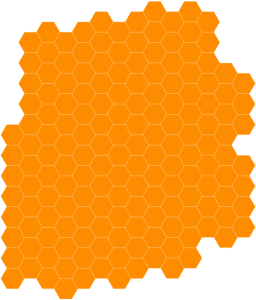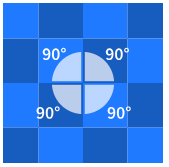I have created tessellations that are regular, semi-irregular and irregular. Creating an irregular tessellation was most difficult for me because I didn’t know what shape to use and how I should connect it to other shapes to create a tessellation.
The difference between regular, semi-irregular and irregular tessellations is that they all have rules. Neither has to have a gap between the shapes.
Vocabulary:
Regular tessellations contain regular polygons(all sides are the same number and all vertices the same angle) that have exactly the same faces, vertices and size
Semi-irregular tessellations contain combinations of shapes that have their internal angles(vertices) add up to 360 degrees
Irregular tessellations contain irregular polygons(either all sides and vertices not equal, sides not equal, vertices not equal) that fit together perfectly like a puzzle

